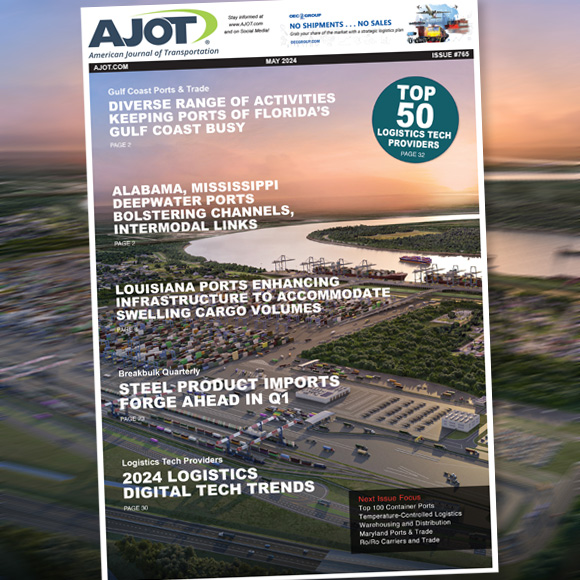Logistics Technology - RFID offers opportunity for change
By Karen E. Thuermer, AJOT
The hype about radio frequency identification (RFID) technology for the retail supply chain is reaching a fever pitch, although RFID has been around for more than half a century.
RFID technology relies on small computer chips and antennas integrated into a paper or plastic label (tag) that can be scanned by an electronic reading device. The scan allows automatic collection of data on the chip, which can include information on warranty, where the product was manufacturered, or product details such as quantity, size, color, etc.
With large retailers such as Wal-Mart, Target and others mandating use of RFID in the not-so-distant future, like it or not, manufacturers, retailers and logistics operators are having to learn everything they can about RFID and how it will affect the way they do business.
“Enormous progress is being made on the commercial applications of this technology that makes the entire industry supply chain visible, efficient, and collaborative,” wrote Antony Burgmans of Unilever and Zygmunt Mierdorf of METRO Group in a joint message as co-chairman of the Global Commerce Initiative in Cologne, Germany, an organization that works in collaboration with IBM.
Burgmans and Mierdorf point out that some challenges and barriers to a broad implementation of RFID still exist.
“Nevertheless, some companies are leading the way with the technology applications and pilot testing of RFID tags attached to items, cases, and pallets,” they say. “The lessons learned from these early adopters acknowledge these challenges and barriers, but they also point to benefits already proven in these piloted tests and to those benefits alluded to by the tremendous promise of this initiative.”
Retailers lead the way
At the forefront of the RFID movement is Wal-Mart, which is mandating that all its vendors tag their cases with RFID by January 2005. Christopher Boone of IDC, a Framingham, MA research group, pointed out during a seminar on the topic at the National Press Club (NPC) in Washington, DC that despite Wal-Mart’s mandate, the technology still has many hurdles to overcome before it can be fully adopted across the board by retailers.
Wal-Mart is pushing RFID along with other retailers, as well as government agencies, the US Department of Defense and US Food and Drug Administration, which plan to use it to track inventory in their warehouse and distribution chains. Add to the retailers list Target, which will begin requiring its use starting in 2005; Albertson’s grocery stores, by April 2005, and, in Europe, Metro and Tesco by the end of this year.
“Wal-Mart is even more aggressive in its bulk pharmaceuticals area,” Boone says.
Scott McGregor, president and CEO of Philips Semiconductor, speaking at the NPC session, stressed, “From initial drug trials to production and distribution, RFID’s ability to ensure the validity of data within the pharmaceutical industry is providing many new opportunities to reduce costs while improving both drug safety and the quality of products. The high cost of many modern pharmaceuticals makes these products a natural target for counterfeiters.”
By January 2005, three Wal-Mart Distribution Centers in Texas will implement RFID in which products going to 3,000 outlets will be tracked back to the stock room. “But not to the store,” Boone adds. “We will not see broad scale use of RFID, regardless of Wal-Mart’s use of it. Much depends on how fast Wal-Mart will expand its use beyond 2005.”
Supply chain management advantages
McGregor points out that RFID offers efficient supply chain management on both item-level and pallet/case-level, such as improved on-the-shelf availability.
“Shelves of key items can signal an alert for replenishment,” he says. “Consumers can also be ensured of fresher goods. The improved and controlled logistics processes enable the more rapid availability of products.”
Already almost every item sold through retailers and supermarkets around the world today contains a barcode printed on it




